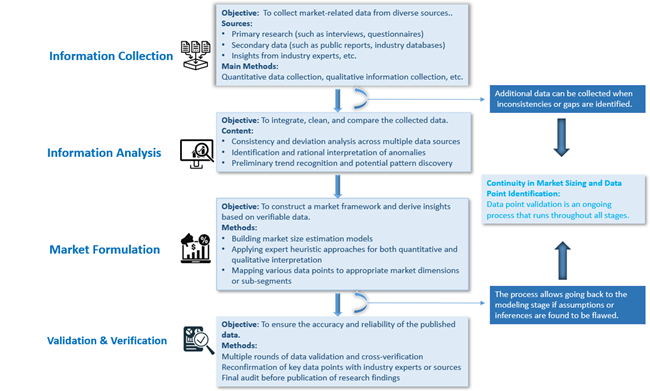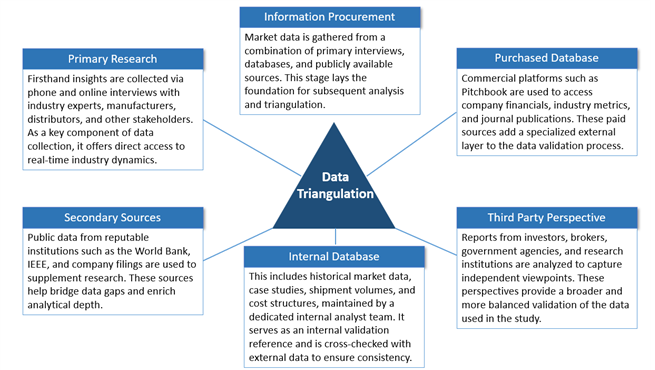UV-based missile warning systems are passive optical sensor platforms
that detect the solar-blind ultraviolet (UV) emissions—typically wavelengths
below 290nm—from missile plumes during launch. These systems use solar-blind
intensified sensors or filters to suppress background sunlight and isolate the
distinct UV signature of missile motor flames. Critical performance parameters
include detection wavelength, field-of-view angle (e.g., 90°), false alarm
rate, detection range, response time, and environmental ruggedness (e.g.,
MIL-STD compliance). These systems are deployed on helicopters, fixed-wing
aircraft, ground vehicles, and unmanned platforms.
Early missile warnings were mainly based on infrared warnings. This is
because the spectrum of missile tail flame radiation has characteristic peaks
at 2.7um and 4.3um, and carbon dioxide and water vapor have strong absorption
of these two spectrum bands. Therefore, early missile warnings mostly choose
these two spectrum bands. This passive working mode of infrared warning system
has some advantages of its own, such as strong anti-interference ability, good
concealment, and can work at any time.
However, many technical improvements in the current missile engines are
working to reduce the radiation intensity of the missile tail flame at these
two characteristic peaks. At present, engines that do not contain carbon
dioxide and water vapor in the missile tail gas have been produced and
designed, which greatly reduces the infrared radiation in the missile tail
flame, greatly increases the false alarm rate of infrared warning, and most of
the laser weapons currently developed are concentrated in the infrared band,
which also poses a certain threat to the safety of the infrared warning system.
Therefore, the simple infrared warning system has gradually failed to meet the
needs of technological development, and the ultraviolet warning system came
into being.
The ultraviolet warning optical system detects ultraviolet radiation in
the missile tail flame and plume to achieve the purpose of warning the missile.
No matter what material the missile uses, its tail flame will contain
ultraviolet radiation. Ultraviolet warning uses "day-blind
ultraviolet" to detect ultraviolet radiation from the missile tail flame
flying out of the atmosphere. "Solar-blind ultraviolet" refers to the
spectrum band of 0.25 to 0.2um, which is mainly formed because most of the
light waves in this band of solar radiation (the main source of ultraviolet
radiation) are absorbed by the earth's ozone layer, and only a very small
amount of natural sunlight can reach the ground. When the height of the target
object exceeds 50km, due to the reduction of ozone, the absorption of the
atmosphere on the ultraviolet band decreases, and the ultraviolet target signal
is enhanced. Therefore, when military targets such as missiles appear outside
the ozone layer, the ultraviolet radiation of its engine tail flame is not
affected by atmospheric absorption and attenuation, and the signal reaching the
ultraviolet detection equipment is strong, while the background signal is very
small and smooth. The signal-to-noise ratio of the ultraviolet signal received
by the ultraviolet detector is quite high, thereby achieving the purpose of
detecting and warning military targets.
Market Overview:
According to LookWhole Insight, the global UV-Based Missile Warning System market is projected to reach USD 1252.94 Million in 2024. It is expected to grow to USD 1963.81 Million by 2033, registering a compound annual growth rate (CAGR) of 5.12% during the forecast period (2025–2033).
Since the 1960s, countries around the world have begun research on
detecting missiles in the ultraviolet band. Early research focused on measuring
the ultraviolet radiation of missile tail flames. After the 1980s, with the
development of ultraviolet detection technology, the use of ultraviolet
radiation in the "solar blind zone" to warn incoming missiles has
also made significant progress. Ultraviolet warning equipment can be
technically divided into the first generation of schematic type and the second
generation of imaging type. The main difference lies in the ultraviolet
detector. The former uses a photomultiplier tube, and the latter uses an image
intensifier.
Overview of UV Missile Warning Systems
|
Model |
Country/Region |
Core Technology Description |
Detector Type |
Field of View |
Response Time |
Multi-Target Capability |
Application Platforms |
Additional Features |
|
AN/AAR-47 |
USA |
UV missile warning + laser warning + hostile fire indication |
Single-anode PMT |
360° horizontal × 92° elevation |
2–4 s |
No |
V-22, C-130, UH-60, etc. |
>5000 units delivered; HFI supported in newer versions |
|
MAW-300 |
Sweden |
Solar-blind UV warning with overlapping conical FOVs for 360° coverage |
Photomultiplier Tube |
110° conical per sensor |
2–3 s |
No |
Light aircraft and helicopters |
Compact design, low power consumption |
|
Guitar-300/320 |
Israel |
UV tail flame detection, basic threat algorithm |
Photomultiplier Tube |
Not disclosed |
<4 s |
No |
Helicopters and small aircraft |
Predecessors to the Guitar-350 |
|
AN/AAR-54(V) |
USA |
Imaging UV detection + multi-source tracking + threat classification |
UV Image Intensifier |
120° per unit, full 360° with multiple |
<1 s |
Yes |
MC-130, helicopters, ground platforms |
Operational in US, UK, Germany, Australia, etc. |
|
MILDS AAR-60 |
Germany / France |
Staring UV CCD array + high-performance target detection |
UV CCD Array |
120° per sensor × up to 6 units |
~0.5 s |
Yes |
CH-47, C-130; >4000 systems deployed |
Each sensor has onboard processor; MTBF > 9600 flight hours |
|
Guitar-350 |
Israel |
Imaging + inertial compensation + complex filtering algorithms |
UV Image Intensifier |
120° × 4–6 sensors |
4–6 s |
Yes |
Fighters, transports, helicopters |
Detects 100+ missile types; strong anti-spoofing capabilities |
|
101KS-U |
Russia |
Multi-head UV + laser channel integrated into 360° aircraft coverage |
Dual-mode (UV + Laser) |
Full spherical coverage (distributed) |
Not disclosed |
Yes |
Su-57, Su-35 |
Part of optical "transparent cockpit"; includes laser warning |
Key Development Trends
Infrared (IR) and ultraviolet (UV) missile warning systems each have their own advantages. However, relying on a single detection method often limits the effectiveness of target detection. To reduce false alarm rates and improve early warning efficiency, dual-band UV-IR missile warning has emerged as a promising solution. As a new approach to missile detection and tracking, it plays a vital role in enhancing modern missile defense systems.
Global UV-Based Missile Warning System Market: Competitive Landscape
The global UV Missile Warning System (MWS) market is highly specialized and competitive, dominated by major defense contractors such as Northrop Grumman, BAE Systems, Hensoldt, Rafael and Saab Avionics. These companies offer both first-generation non-imaging systems and increasingly sophisticated second-generation imaging systems that offer longer detection ranges, wider angular resolution and more robust multi-target tracking capabilities.
Currently, European and Israeli companies are expanding their export business, especially in the Asia-Pacific and Middle East regions, while countries such as Russia continue to develop proprietary systems for advanced fighter aircraft, such as the 101KS-U. In addition, there is a growing demand for compact and lightweight UV MWS for drones, helicopters and ground vehicles.
Report Framework and Key Highlights:
Market Dynamics: Identification of major market drivers, restraints, opportunities, and challenges.
Trend Analysis: Examination of ongoing and emerging trends impacting the market.
Competitive Landscape: Detailed profiles and market positioning of major players, including market share, operational status, product offerings, and strategic developments.
Strategic Analysis Tools: SWOT Analysis, Porter’s Five Forces Analysis, PEST Analysis, Value Chain Analysis
Market Segmentation: By type, application, region, and end-user industry.
Forecasting and Growth Projections: In-depth revenue forecasts and CAGR analysis through 2033.
This report equips readers with critical insights to navigate competitive dynamics and develop effective strategies. Whether assessing a new market entry or refining existing strategies, the report serves as a valuable tool for:
Industry players
Investors
Researchers
Consultants
Business strategists
And all stakeholders with an interest or investment in the UV-Based Missile Warning System market.
Global UV-Based Missile Warning System Market: Segmentation Analysis and Strategic Insights
This section of the report provides an in-depth segmentation analysis of the global UV-Based Missile Warning System market. The market is segmented based on region (country), manufacturer, product type, and application. Segmentation enables a more precise understanding of market dynamics and facilitates targeted strategies across product development, marketing, and sales.
By breaking the market into meaningful subsets, stakeholders can better tailor their offerings to the specific needs of each segment—enhancing competitiveness and improving return on investment.
Global UV-Based Missile Warning System Market: Market Segmentation Analysis
The research report includes specific segments by region (country), manufacturers, Type, and Application. Market segmentation creates subsets of a market based on product type, end-user or application, Geographic, and other factors. By understanding the market segments, the decision-maker can leverage this targeting in the product, sales, and marketing strategies. Market segments can power your product development cycles by informing how you create product offerings for different segments.
|
ATTRIBUTE |
Details |
|
|
Time Coverage |
Historical Year: 2020– 2024 Base Year: 2024 Estimated Year: 2025 Forecast Year: 2025 - 2033 |
|
|
Market Segmentation |
||
|
By Type |
Near-UV (300–400 nm) Mid-UV (200–300 nm) Far-UV (below 200 nm) |
|
|
By Application |
Fighter jet Helicopter Ground vehicle Others |
|
|
By Company |
Northrop Grumman Thales Group Elbit Systems Rafael MBDA Saab Avitronics Aselsan Hensoldt Textron Systems Indra Terma Exosens Ofil Ltd. CI Systems DRDO Deagel |
|
|
By Region |
North
America |
|
Report Framework and Chapter Summary
Chapter 1: Report Scope and Market Definition
This chapter outlines the statistical boundaries and scope of the report. It defines the segmentation standards used throughout the study, including criteria for dividing the market by region, product type, application, and other relevant dimensions. It establishes the foundational definitions and classifications that guide the rest of the analysis.
Chapter 2: Executive Summary
This chapter presents a concise summary of the market’s current status and future outlook across different segments—by geography, product type, and application. It includes key metrics such as market size, growth trends, and development potential for each segment. The chapter offers a high-level overview of the UV-Based Missile Warning System Market, highlighting its evolution over the short, medium, and long term.
Chapter 3: Market Dynamics and Policy Environment
This chapter explores the latest developments in the market, identifying key growth drivers, restraints, challenges, and risks faced by industry participants. It also includes an analysis of the policy and regulatory landscape affecting the market, providing insight into how external factors may shape future performance.
Chapter 4: Competitive Landscape
This chapter provides a detailed assessment of the market's competitive environment. It covers market share, production capacity, output, pricing trends, and strategic developments such as mergers, acquisitions, and expansion plans of leading players. This analysis offers a comprehensive view of the positioning and performance of top competitors.
Chapters 5–10: Regional Market Analysis
These chapters offer in-depth, quantitative evaluations of market size and growth potential across major regions and countries. Each chapter assesses regional consumption patterns, market dynamics, development prospects, and available capacity. The analysis helps readers understand geographical differences and opportunities in global markets.
Chapter 11: Market Segmentation by Product Type
This chapter examines the market based on product type, analyzing the size, growth trends, and potential of each segment. It helps stakeholders identify underexplored or high-potential product categories—often referred to as “blue ocean” opportunities.
Chapter 12: Market Segmentation by Application
This chapter analyzes the market based on application fields, providing insights into the scale and future development of each application segment. It supports readers in identifying high-growth areas across downstream markets.
Chapter 13: Company Profiles
This chapter presents comprehensive profiles of leading companies operating in the market. For each company, it details sales revenue, volume, pricing, gross profit margin, market share, product offerings, and recent strategic developments. This section offers valuable insight into corporate performance and strategy.
Chapter 14: Industry Chain and Value Chain Analysis
This chapter explores the full industry chain, from upstream raw material suppliers to downstream application sectors. It includes a value chain analysis that highlights the interconnections and dependencies across various parts of the ecosystem.
Chapter 15: Key Findings and Conclusions
The final chapter summarizes the main takeaways from the report, presenting the core conclusions, strategic recommendations, and implications for stakeholders. It encapsulates the insights drawn from all previous chapters.






